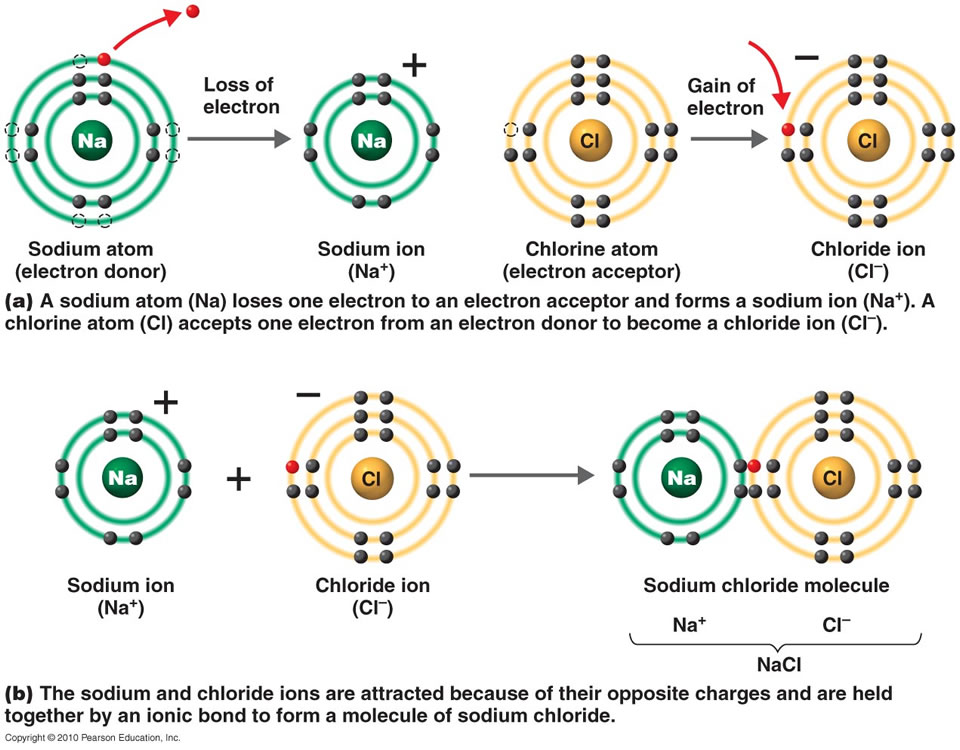how to form ionic bonds How does an ionic bond form between sodium and chlorine
Chemical Bonds Chemical bonds are the basis of all matter in the universe. They are what hold atoms together and determine how they interact with one another. In this post, we will explore the different types of chemical bonds and their significance in the world around us. Ionic bonding is a type of chemical bonding that occurs when there is a transfer of electrons between atoms. This creates charged particles called ions, which are attracted to each other by the opposite charges. One example of ionic bonding is the formation of table salt (NaCl). The image below illustrates the process of ionic bonding, showing the transfer of electrons from sodium (Na) to chlorine (Cl). [image]
Chemical Bonds
.PNG)
Another type of chemical bonding is covalent bonding. In this type of bonding, atoms share electrons to achieve a stable electron configuration. Covalent bonds can occur between atoms of the same element or different elements. One example of covalent bonding is the formation of water (H2O), where two hydrogen atoms and one oxygen atom share electrons to form the molecule. The image below depicts the Lewis structure of water, highlighting the shared electrons. [image] Covalent Bonding: Water (H2O)
 The image above shows the Lewis structure of water (H2O), illustrating how the two hydrogen atoms share electrons with the oxygen atom, forming covalent bonds.
The image above shows the Lewis structure of water (H2O), illustrating how the two hydrogen atoms share electrons with the oxygen atom, forming covalent bonds.
Both ionic and covalent bonding play crucial roles in the world around us. Ionic compounds are often found as salts and are essential for many biological processes. For example, sodium ions (Na+) and chloride ions (Cl-) are important for nerve function and muscle contractions in our bodies. On the other hand, covalent compounds, such as water, are vital for life as we know it. Water is the solvent in which most biological reactions take place, and its unique properties, such as high heat capacity and surface tension, support various life processes. Understanding chemical bonds is fundamental to fields such as chemistry, biochemistry, and materials science. It allows scientists to predict how different substances will interact, giving us insights into everything from the behavior of compounds in drugs to the performance of materials in technology. In conclusion, chemical bonds are the forces that hold atoms together, creating the diverse world we know. Whether through the transfer of electrons in ionic bonding or the sharing of electrons in covalent bonding, these bonds shape the properties and behaviors of the substances around us. By understanding chemical bonds, we can further our knowledge and continue to make incredible advancements in various scientific fields. If you are searching about Chemical Bonds you’ve visit to the right web. We have 5 Pics about Chemical Bonds like savvy-chemist: Ionic Bonding (2) Dot and cross diagrams/Lewis structures, Ionic Bond – Definition, Types, Properties & Examples and also How Does An Ionic Bond Form Between Sodium And Chlorine - slideshare. Here it is:
Chemical Bonds
.PNG)
Savvy-chemist: Ionic Bonding (2) Dot And Cross Diagrams/Lewis Structures
 derekcarrsavvy-chemist.blogspot.co.ukionic chemistry bond bonds chemical bonding diagram dot cross lewis diagrams science covalent molecule why structures shows vs chemist which
derekcarrsavvy-chemist.blogspot.co.ukionic chemistry bond bonds chemical bonding diagram dot cross lewis diagrams science covalent molecule why structures shows vs chemist which
Ionic Bond – Definition, Types, Properties & Examples
 www.embibe.comionic exams
www.embibe.comionic exams
Examples Of Ionic Bonds And Compounds
/ionic-bond-58fd4ea73df78ca1590682ad.jpg) www.thoughtco.comionic bonds examples compounds bond
www.thoughtco.comionic bonds examples compounds bond
How Does An Ionic Bond Form Between Sodium And Chlorine - Slideshare
.PNG)
Savvy-chemist: ionic bonding (2) dot and cross diagrams/lewis structures. Ionic exams. Ionic bond – definition, types, properties & examples